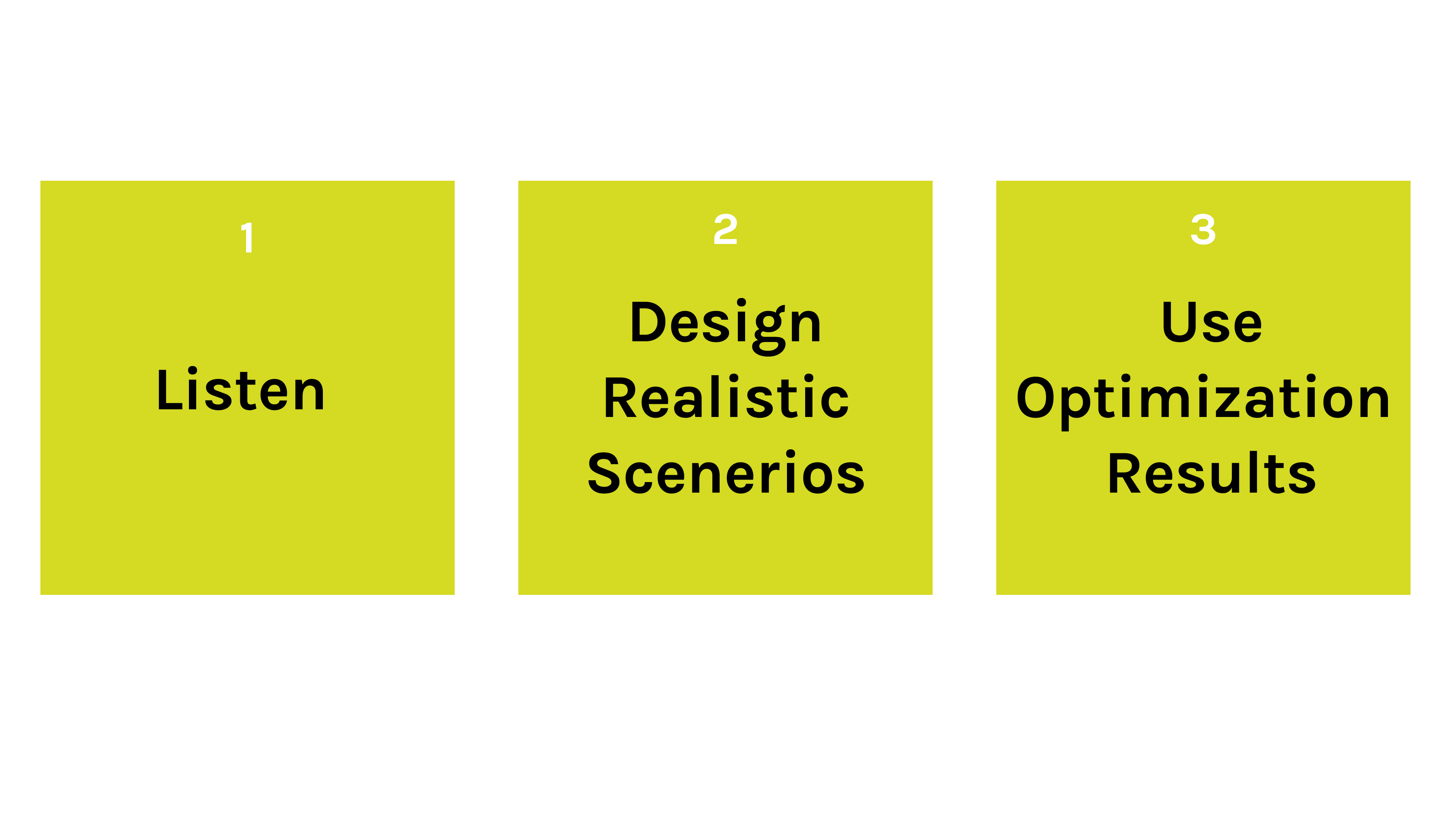“Personally, I am very fond of strawberries and cream, but I have found that for some strange reason, fish prefer worms.” – Dale Carnegie
This quote illustrates the idea that while a product or service may seem like a great idea to your internal stakeholders, a keen understanding of the needs of your customers and the marketplace is the key to optimizing products and services.
Is what you’re offering something your customers will respond to and that will turn them into loyal purchasers?
In-market success depends on understanding your customers’ needs and the competitive marketplace. Having these insights is critical to achieving the optimal balance of features, benefits and pricing that will maximize success and profit.
In-market success depends on understanding your customers’ needs and the competitive marketplace.”
The path to product and service optimization differs based on whether you are launching a product or service for the first time or refreshing an existing line. But overall, here are best practices to link customer needs to your product and service development:

1. Listen (Literally)
As a career quantitative researcher, it’s a given that I’m going to recommend a trade-off approach to product or service optimization. However, I believe that a qualitative discovery is an important first step. The approach can be one-on-one interviews, focus groups, online bulletin boards, or any other qualitative method where you talk to target consumers, and before you determine which features to assess, really listen to the wants, needs, and pain points of your target. Going back to the Dale Carnegie quote, make sure you are not serving up strawberries and cream if your target is looking for worms. This phase gives the product and service developers critical human insights, guiding them to make the right decisions for the right customers.
2. Design Realistic Scenarios (But Also Include Possible Future Scenarios)
Once you’ve communicated what you heard in the Listen phase, and have your key stakeholders on board, it’s time to design product or service scenarios you want to test with your target audiences. It’s important at this stage to show options for your brand and your competition that people will find realistic and sensible. For example, you wouldn’t want to show a top of the line luxury car with a price applicable to a basic economy car; likewise, you wouldn’t want to show a basic economy car with leather interior and top of the line features that would not realistically be available on that model. As you develop your features and benefits, take the steps necessary to ensure that unrealistic combinations won’t muddy the waters. That is not to say, however, that you should restrict all combinations that don’t currently exist. In most industries, technology is rapidly improving, so you should include scenarios that are on the short- or long-term horizon. That will keep your optimization efforts relevant as the market evolves.
3. Use Optimization Results to Guide Product Development (and more!)
Naturally, the output of your optimization efforts should inform development of products or services that meet customer needs and drive revenue. However, it also provides information on the importance of attributes and specific features that can be used to guide product packaging and messaging that will appeal to your target.
Customer needs should drive your decisions on what products or services are worthy of going to market and will truly move the needle in terms of acceptance and sales.”
Customer needs should drive your decisions on what products or services are worthy of going to market and will truly move the needle in terms of acceptance and sales.
Want to talk more on how these steps can guide your go-to-market plans?


